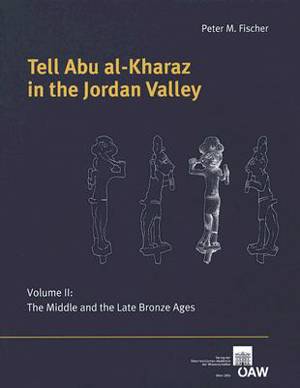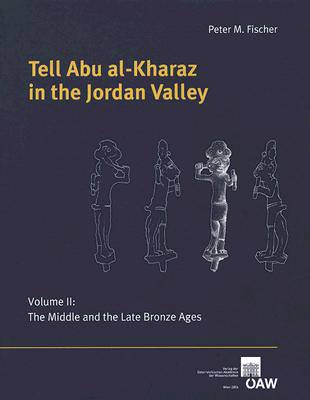
- Afhalen na 1 uur in een winkel met voorraad
- Gratis thuislevering in België vanaf € 30
- Ruim aanbod met 7 miljoen producten
- Afhalen na 1 uur in een winkel met voorraad
- Gratis thuislevering in België vanaf € 30
- Ruim aanbod met 7 miljoen producten
Zoeken
Tell Abu Al-Kharaz in the Jordan Valley
Volume I: The Middle and the Late Bronze Ages
Peter M Fischer
€ 120,95
+ 241 punten
Uitvoering
Omschrijving
The multi-period town of Tell Abu al-Kharaz in the Trans-Jordanian Central Jordan Valley was excavated from 1989 to 2001 under the direction of the author. The town flourished during three main periods: the Early and Middle-Late Bronze Ages and the Iron Age. A long occupational lacuna occurred between the Early Bronze Age II and the second half of the Middle Bronze Age. The present publication is the third publication in a series and the first to deal with a Middle-Late Bronze Age settlement in Transjordan. Excavation and processing methods are described in detail in Chapter 1. Stratigraphy, architecture and pottery are presented as an integrated entity in Chapter 2. Chapter 3 presents typo-chronological conclusions and the diachronic development of common earthenware. The enigmatic Chocolate-on-White Ware, which can be regarded as Palestine's most sophisticated earthenware, and imported earthenware, mainly from Cyprus, are studied. Chapter 4 deals with the lithics, and Chapters 5-7 with atomic-absorption spectroscopy of copper and copper alloys, the climate, the fauna and flora, and radiocarbon datings. The final chapter, "Discussions and Conclusions", takes a detailed look at the general and specific environment, the settlement, the people and their administration as well as population statistics. This chapter also contains a synthesis of the architecture during the eight phases of the Middle and Late Bronze Age occupation, as well as of the pottery and small finds. A reconstruction of the town's economy, trade and trading routes is also presented. The chronological discussion includes a slightly revised terminology and periodization for the late Middle and Late Bronze Ages in addition to the discussion on relative and absolute chronology.
Specificaties
Betrokkenen
- Auteur(s):
- Uitgeverij:
Inhoud
- Aantal bladzijden:
- 385
- Taal:
- Engels
- Reeks:
- Reeksnummer:
- nr. 11
Eigenschappen
- Productcode (EAN):
- 9783700138150
- Verschijningsdatum:
- 24/01/2007
- Uitvoering:
- Paperback
- Formaat:
- Trade paperback (VS)
- Afmetingen:
- 233 mm x 304 mm
- Gewicht:
- 1655 g

Alleen bij Standaard Boekhandel
+ 241 punten op je klantenkaart van Standaard Boekhandel
Beoordelingen
We publiceren alleen reviews die voldoen aan de voorwaarden voor reviews. Bekijk onze voorwaarden voor reviews.











